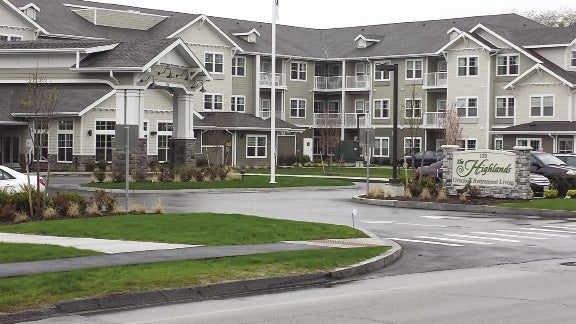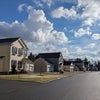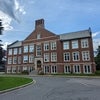Senior housing choices on the rise in Mass.
 The Highlands at Westborough offers a community-within-a-community environment. Residents can be as private or as social as they wish, according to its marketing materials.
The Highlands at Westborough offers a community-within-a-community environment. Residents can be as private or as social as they wish, according to its marketing materials.
Senior housing choices today are more varied than ever, ranging from so-called “Over-55” developments, which are age-specific but which do not offer staff support services, to “Active Adult” communities, which offer support services such as maintenance, meals and community activities as part of their residential package. Continuing Care Retirement Communities (CCRCs) offer transition from independent to assisted living – and short- and long-term nursing and rehab services – to accommodate the needs of their aging population residents.
While the senior housing market in Massachusetts appears robust, it's important to note that for those consumers making plans for their long-term health needs, not all offer the same level of services. Active Adult and Over-55 housing communities have monthly maintenance fees similar to those of non-age-specific developments, but those usually don't cover health services.
Several Over-55 or Active Adult developments are either on line or in the planning stages in Central Massachusetts. One is WestRidge in Hudson, a 135-home attached and single family development on 31 acres with 73 acres of open space. It's an on-site community for active adults, including a clubhouse, fitness center and village green. It's operated by Thorndike Development.
Another development is the Highlands at Westborough, managed by Hawthorn Retirement Group LLC, based in Washington state, which has properties all over the U.S.
The Highlands emphasizes independent living, providing a community experience for its residents. Its rental apartment units are studio and one- or two bedrooms. The community amenities include scheduled bus transportation to doctors' appointments and for shopping trips and errands. It also offers pre-planned transportation to cultural events, day trips and museums.
While the development is not an assisted-living facility and does not have nurses on-site, it does have supportive services and amenities. Its management team lives at the property and is available around the clock, and each room in each unit features pull cords for residents to call for help if needed. The Highlands contracts with home health agencies to provide personal care assistance to residents who request it.
One of the most recent senior-housing initiatives is a proposed development in Framingham. In early August, the Daily News reported that developer Brendon Homes' Brendon Giblin had signed an agreement to buy the former Marist Retreat Center, which has been shuttered since 2011, from the Marist Fathers of Boston. Development plans are expected this fall. Brendon Homes, which specializes in custom-built homes, reportedly wants to demolish the existing structures and build 60 units of high-end Over-55 housing and to partner with another entity to build assisted living and memory care services at the site, which sits on 37.5 acres close to the Massachusetts Turnpike.
Seniors by the numbers
We took a look at the numbers on aging. Baby boomers, the first wave of which is now in their mid-60s, will be a much larger market cohort than their predecessors (21 seniors to 100 workers in 2010, rising to 36 per 100 by 2030, according to U.S. Census data), and they will live longer. A 2010 report by the Federal Interagency Forum on Aging-Related Statistics noted that those aged 65 as of that date could expect to live 19.5 additional years, compared to only four additional years in 1960. But the study reports that the 65-and-overs' housing “burden,” including cost and maintenance, rose from 30 percent to 37 percent from 1985 to 2007.
But how many in the burgeoning senior age group will have it or choose to use it? Many stalwarts want to “age in place,” meaning in their family homes (which is not an expense-free proposition), but many took a major hit in their standard of living and retirement prospects in the 2008 recession and CCRCs saw a dip in community unit sales. Home prices have since picked up.
As for CCRCs, current market trends indicate that people choose to move to CCRCs in their late 70s and early 80s, says Paul Bowler, president and CEO at Worcester-based Briarwood, a CCRC with that offers independent living, assisted living, and a short- and long-term nursing and rehab affiliate, Knollwood Nursing. “So, the prognosis is that the 'age wave' will not significantly impact [CCRCs] for several more years,” he said in an email.
The driver of admission to many CCRCs is the entrance fee, he said. Entrance fees support a community's capital needs; the monthly fee covers daily operating expenses. In Briarwood's case, this includes its assisted living center and the operation of Knollwood. Some communities offer a full return of the entry fee when the resident dies or leaves, but these are rare, he said. In most cases, communities refund the entry fee less an amortized portion, which differs by facility, and that ranges from 90 percent to 50 percent.
The next step may be no stairs
What happens when seniors need a higher level of services, such as assisted living or skilled nursing facilities? For CCRCs, that's part of the mission. Bowler said more than 90 percent of the CCRC customer base anticipates eventually living on a single floor.
CCRCs' provision of a continuum of service — assisted living and skilled nursing — provides a clear path of transition as residents' needs change. While contracts are community-specific, the general appeal of a CCRC is a guarantee that residents will get priority when assisted living is required, Bowler says.
The alternative for those in facilities that do not offer a continuum of care is either to move to a nursing home or to bring equivalent skilled service into the housing unit on a 24/7 basis, at a significant additional expense.









0 Comments